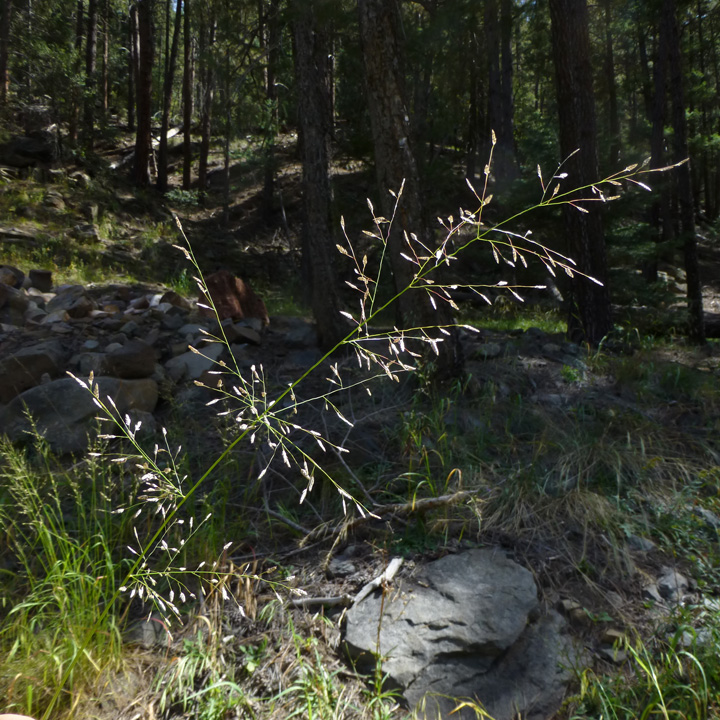Search
View the original page version
Eragrostis
|
Family: Poaceae |
Plants annual or perennial; usually synoecious, sometimes dioecious; cespitose, stoloniferous, or rhizomatous. Culms 2-160 cm, not woody, erect, decumbent, or geniculate, sometimes rooting at the lower nodes, simple or branched; internodes solid or hollow. Leaves not strongly distichous; sheaths open, often with tufts of hairs at the apices, hairs 0.3-8 mm; ligules usually membranous and ciliolate or ciliate, cilia sometimes longer than the membranous base, occasionally of hairs or membranous and non-ciliate; blades flat, folded, or involute. Inflorescences terminal, sometimes also axillary, simple panicles, open to contracted or spikelike, terminal panicles usually exceeding the upper leaves; pulvini in the axils of the primary branches glabrous or not; branches not spikelike, not disarticulating. Spikelets 1-27 mm long, 0.5-9 mm wide, laterally compressed, with (1)2-60 florets; disarticulation below the fertile florets, sometimes also below the glumes, acropetal with deciduous glumes and lemmas but persistent paleas, or basipetal with the glumes often persistent and the florets usually falling intact. Glumes usually shorter than the adjacent lemmas, 1(3)-veined, not lobed, apices obtuse to acute, unawned; calluses glabrous or sparsely pubescent; lemmas usually glabrous, obtuse to acute, (1)3(5)-veined, usually keeled, unawned or mucronate; paleas shorter than the lemmas, longitudinally bowed-out by the caryopses, 2-keeled, keels usually ciliate, intercostal region membranous or hyaline; anthers 2-3; ovaries glabrous; styles free to the bases. Cleistogamous spikelets occasionally present, sometimes on the axillary panicles, sometimes on the terminal panicles. Caryopses variously shaped. x = 10. The origin of the name is obscure. Spikelets 2-many-fld, slightly to strongly flattened, disarticulating above the glumes and between the lemmas, or eventually fragmenting irregularly, or the lemmas individually deciduous from the persistent rachilla (the grain falling free); glumes 1-veined or the second one 3-veined, usually unequal; lemma 3-veined (the lateral veins sometimes obscure), awnless, blunt to acute or short-acuminate, ±keeled but varying from V- shaped in cross-section to rounded on the back; palea somewhat shorter than the lemma, often ciliate on the 2 keels; grain short-cylindric to subglobose, ovoid, or pyriform; ligule a band of short hairs; sheaths almost always pilose or hirsute at the top; panicle open and ±diffusely branched, varying to dense and subglobose to cylindric or spike-like; only 2 of our spp. have anthers more than ca 0.5 mm. 250, cosmop. Gleason, Henry A. & Cronquist, Arthur J. 1991. Manual of vascular plants of northeastern United States and adjacent Canada. lxxv + 910 pp. ©The New York Botanical Garden. All rights reserved. Used by permission. |

